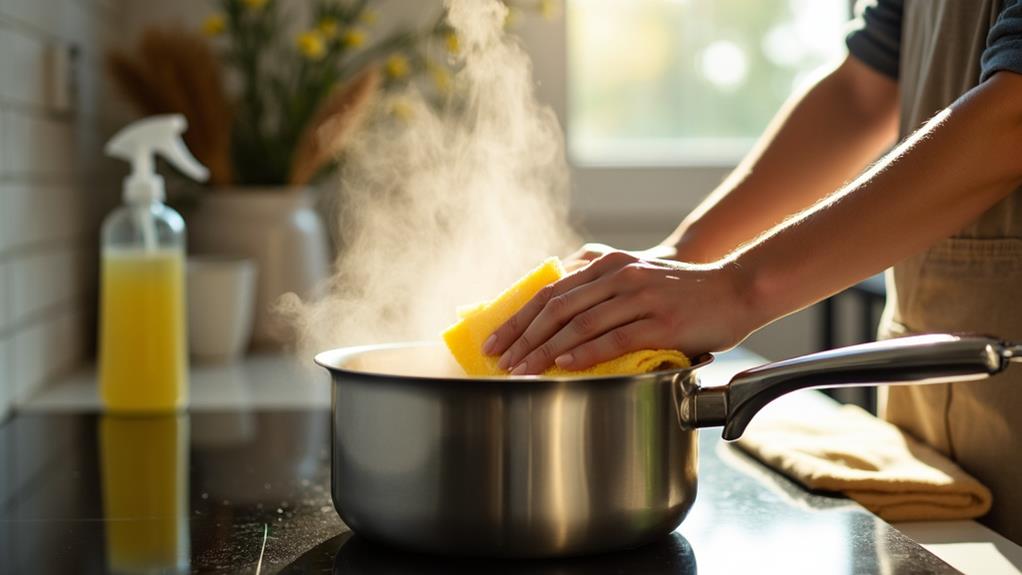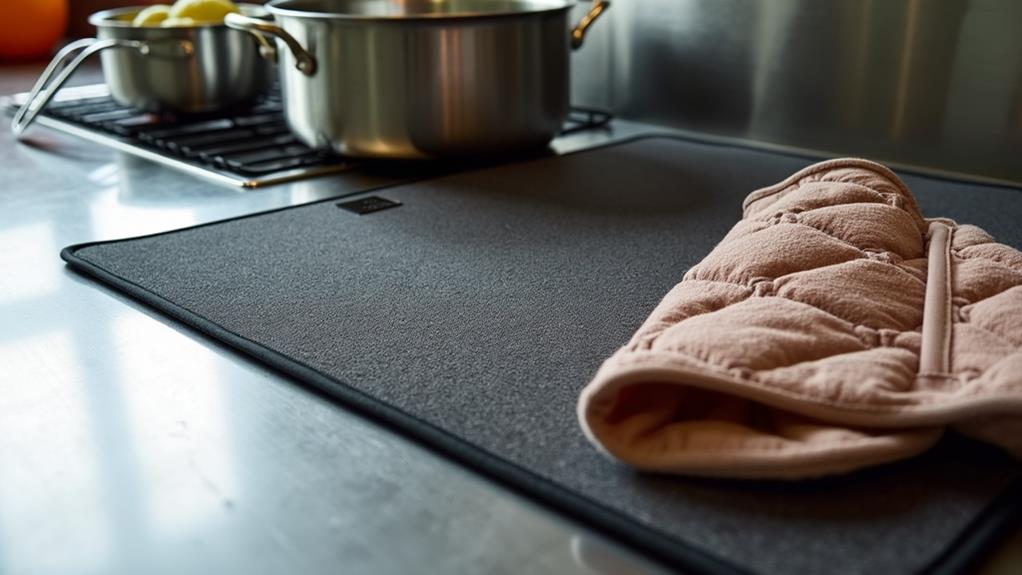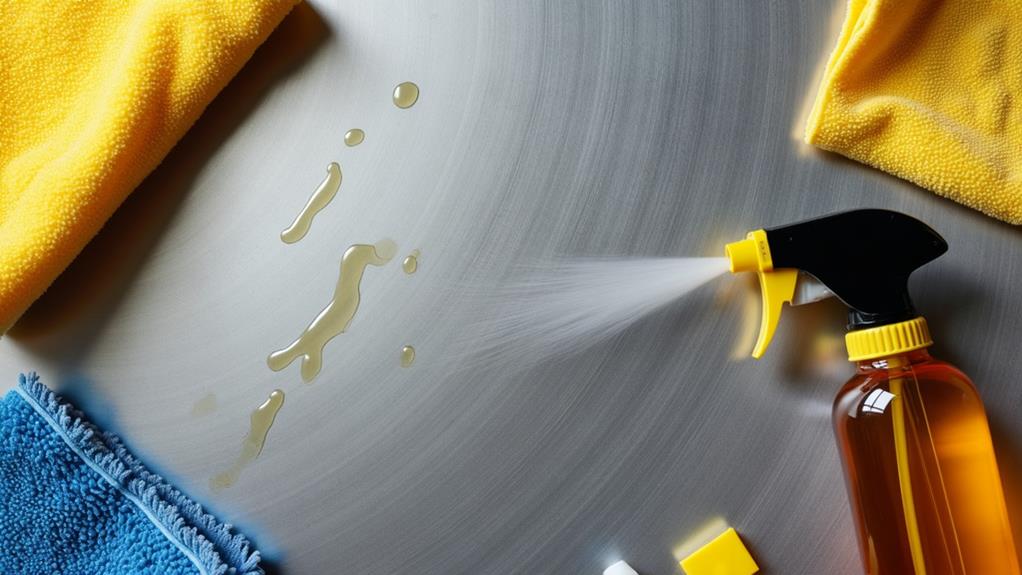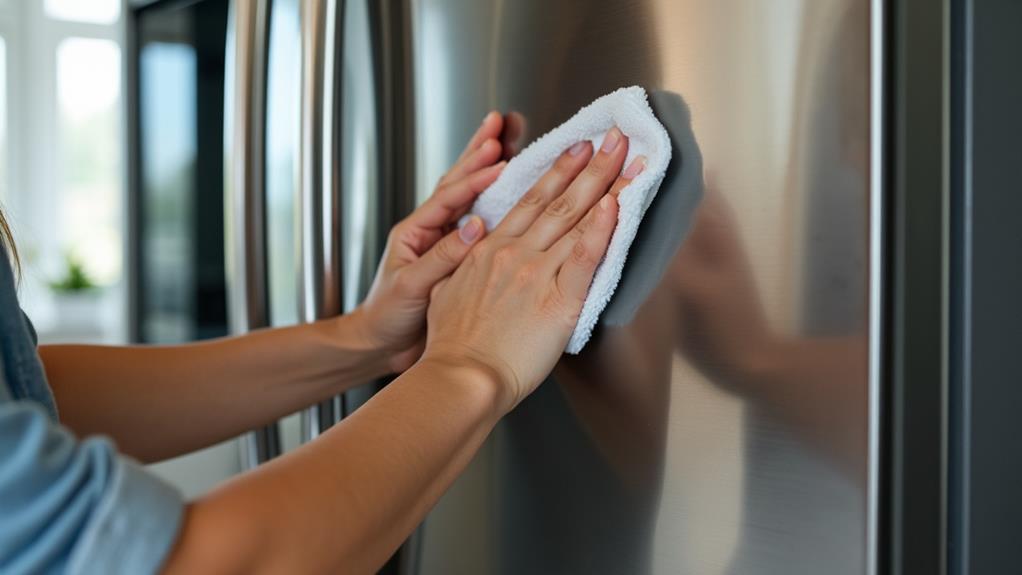How to Keep Stainless Steel Furniture Looking Polished
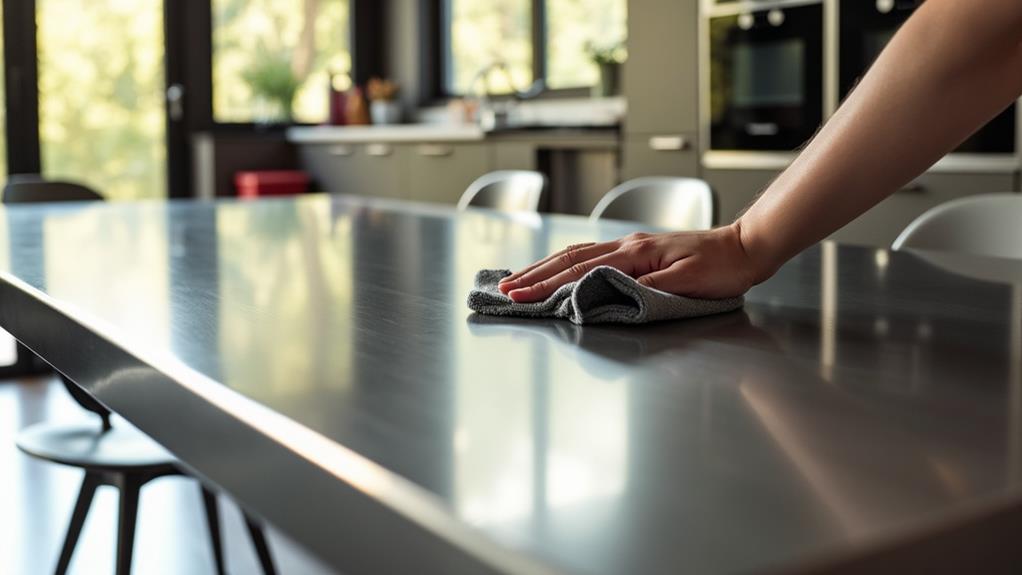
To keep your stainless steel furniture looking polished, use a non-toxic, biodegradable cleaner or a homemade mix of vinegar and water. Clean with a damp microfiber cloth, wiping in the direction of the grain to avoid streaks. Regular dusting and weekly wipe-downs with soap and water are crucial. For stubborn stains, a paste of baking soda and water works wonders. Polish with a stainless steel cleaner or olive oil for added shine, and always avoid harsh chemicals. Immediate drying prevents water spots and positioning furniture away from high-traffic areas helps reduce buildup. Uncover tips for best results ahead.
Choose the Right Cleaner
One key step in maintaining the shine of your stainless steel furniture is to choose the right cleaner. You might think any cleaner will do the trick, but using the wrong one can leave streaks or even damage the surface. To keep it gleaming, consider eco-friendly cleaners. These are not only safe for your furniture but also better for the environment. Look for products labeled as non-toxic and biodegradable.
If you prefer a more hands-on approach, homemade solutions can be just as effective. A simple mixture of vinegar and water works wonders. Fill a spray bottle with equal parts white vinegar and water, then mist it onto the surface. Wipe it clean with a soft cloth, and you'll see a brilliant shine without any harsh chemicals.
Another great homemade option is olive oil. After cleaning your stainless steel with a gentle soap and water solution, apply a small amount of olive oil to a cloth and rub it onto the surface. This not only removes fingerprints but also adds a protective layer.
Use a Microfiber Cloth
In relation to polishing your stainless steel furniture, a microfiber cloth is your best friend. The microfiber benefits are numerous; it's incredibly effective at trapping dust, dirt, and grime without scratching the surface. Unlike traditional cloths, microfiber is designed to pick up and hold onto particles, guaranteeing a thorough clean every time.
When using a microfiber cloth, you'll want to start by dampening it slightly with water or your chosen stainless steel cleaner. This helps to activate the cloth's cleaning fibers. With gentle, circular motions, wipe down the surface of your furniture. The cloth's unique structure allows it to remove smudges and fingerprints effortlessly, leaving behind a polished, streak-free shine.
One of the key cleaning techniques with microfiber is to rinse and wring it out regularly. This guarantees you're not redistributing dirt and oils back onto the furniture. Also, avoid using fabric softeners when washing your microfiber cloths, as they can coat the fibers and reduce their effectiveness. By incorporating these simple steps, you'll keep your stainless steel furniture looking as good as new with minimal effort. The microfiber cloth truly simplifies the process, making maintenance a breeze.
Follow the Grain
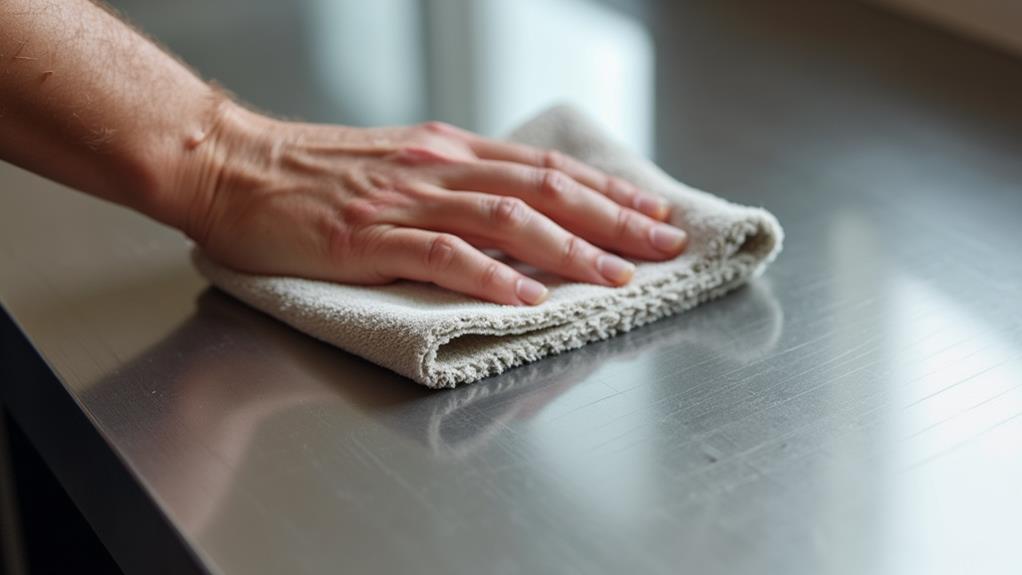
After you've chosen the right cloth, the next step is to pay attention to the grain of your stainless steel furniture. The grain direction refers to the subtle lines running along the surface of the steel. Just like wood, stainless steel has a grain, and it's essential to follow it when cleaning or polishing to maintain a flawless surface texture.
Begin by closely inspecting your furniture under good lighting. You'll notice the grain lines either running horizontally or vertically. Always wipe or polish in the same direction as these lines. Going against the grain can cause unsightly streaks and diminish the overall polished appearance you're aiming for.
When you're ready, use your microfiber cloth to gently wipe along the grain direction. This method helps remove dirt and fingerprints without scratching or dulling the surface texture. If you're using a cleaning solution, apply it directly to the cloth rather than the furniture to avoid excess liquid seeping into seams.
Regular Dusting
Keeping your stainless steel furniture looking its best requires regular dusting. Dust and debris can accumulate quickly, dulling the shine and potentially causing scratches. To avoid this, dust your furniture at least once a week. Use a soft, lint-free cloth or a microfiber duster to gently remove particles. This simple step guarantees that your stainless steel maintains its polished appearance.
Furniture placement also plays a significant role in reducing dust buildup. Position your stainless steel pieces away from high-traffic areas where dust and dirt are more likely to accumulate. Furthermore, keeping your windows closed during windy days will prevent outside particles from settling on your furniture.
Protective coatings can also help minimize dust adherence. Applying a thin layer of a suitable stainless steel polish creates a barrier that repels dust and fingerprints, making it easier to keep your furniture clean. Remember to follow the manufacturer's instructions for the best results.
Regular dusting, mindful furniture placement, and the use of protective coatings are key strategies for maintaining the pristine look of your stainless steel furniture. By incorporating these simple practices into your routine, you'll enjoy gleaming, polished pieces that improve your home's aesthetic.
Remove Stubborn Stains
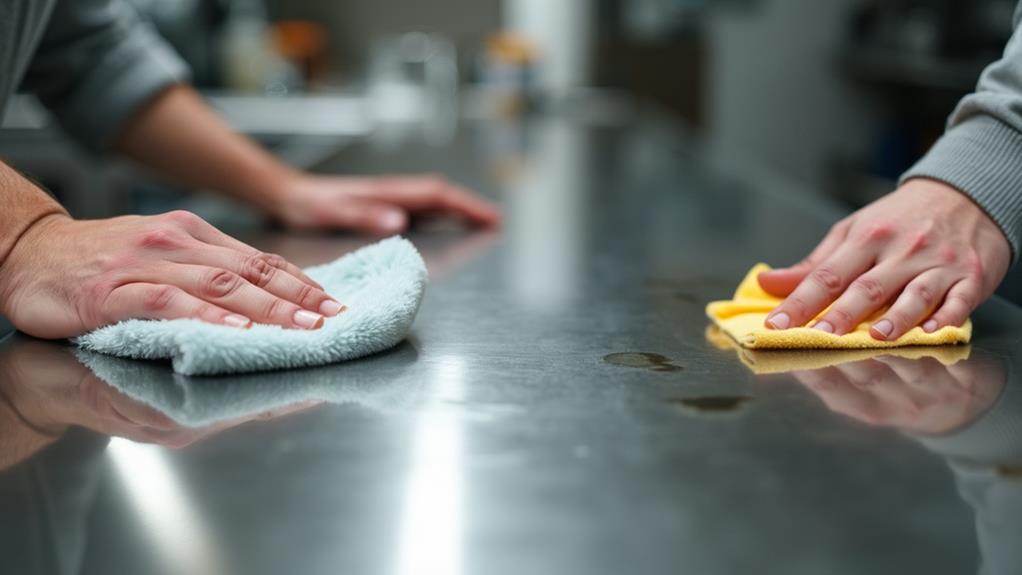
Even with regular dusting, stainless steel furniture can sometimes develop stubborn stains that require extra attention. Don't worry, though; there are effective stain removal techniques you can employ. Initially, you'll need to gather some basic supplies: a soft cloth, mild dish soap, white vinegar, baking soda, and water.
For an eco friendly solution, mix equal parts water and white vinegar in a spray bottle. Spray the stained area and let it sit for a few minutes. Then, wipe it clean with a soft cloth. If the stain persists, you can try these methods:
- Baking Soda Paste: Mix baking soda and water to form a paste. Apply it to the stain, let it sit for a few minutes, then gently scrub with a soft-bristled brush.
- Mild Dish Soap: Apply a small amount of mild dish soap to a damp cloth. Rub the stained area in the direction of the steel grain, then rinse with water and dry.
- Club Soda: Pour some club soda onto a cloth and rub the stain. The carbonation helps lift the stain off the surface.
- Olive Oil: For greasy stains, apply a small amount of olive oil on a cloth and rub in the direction of the grain.
Polish for Extra Shine
For that extra gleam on your stainless steel furniture, polishing is essential. Start by selecting a high-quality stainless steel polish or even a homemade solution like olive oil. Apply a small amount of the polish to a microfiber cloth, making certain you don't use too much product which can leave streaks.
One of the best polishing techniques involves wiping in the direction of the grain. Stainless steel has a brushed finish that runs in one direction, and following this grain guarantees you don't create new scratches while improving the shine. Make gentle, sweeping motions, and avoid pressing too hard to prevent any potential damage.
After applying the polish, buff the surface with a clean, dry section of the microfiber cloth. This step is important for shine improvement, as it removes any excess polish and brings out the natural luster of the steel.
For hard-to-reach areas or intricate designs, use a soft-bristled toothbrush dipped in the polish to guarantee every nook and cranny gleams. Regular polishing not only keeps your furniture looking pristine but also maintains its longevity, making it a worthwhile habit to incorporate into your cleaning routine.
Avoid Harsh Chemicals
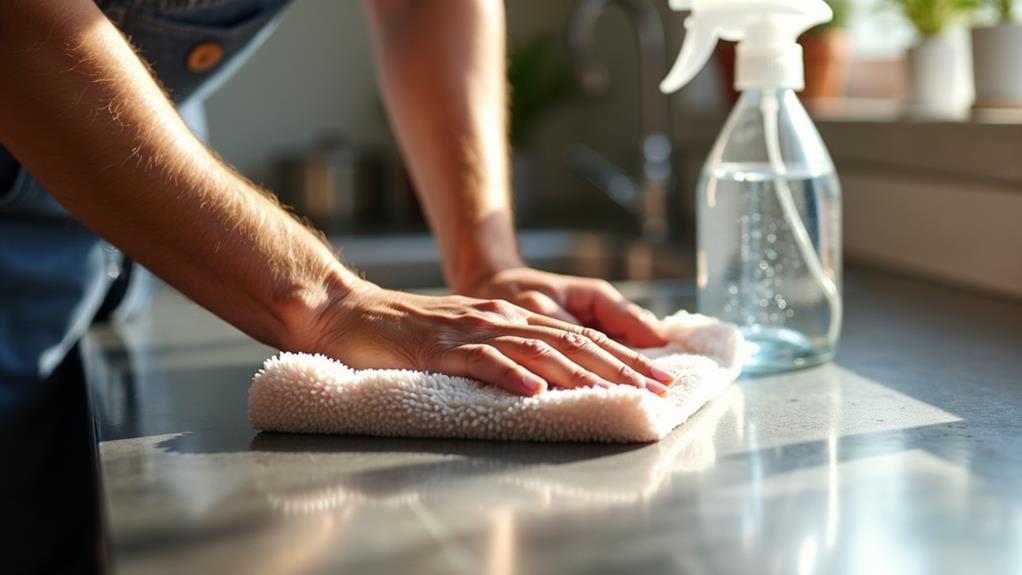
It's crucial to steer clear of harsh chemicals when cleaning your stainless steel furniture. These chemicals can cause damage to the surface, leading to dullness and even corrosion over time. Instead, opt for eco friendly alternatives that are gentler on both the furniture and the environment.
Using natural solutions not only preserves the integrity of your furniture but also guarantees the protective coatings remain intact. Here are some excellent options to take into account:
- Baking soda and water: Create a paste to gently scrub away stains without scratching the surface.
- White vinegar: Diluted with water, it effectively cuts through grime and leaves a streak-free finish.
- Olive oil: A few drops can be buffed into the surface to improve shine and add a layer of protection.
- Dish soap: Mixed with warm water, it's perfect for regular cleaning without any abrasive effects.
Prevent Water Spots
Water spots can be a common nuisance on stainless steel furniture, especially in areas with hard water. To prevent these unsightly blemishes, it's essential to address both water quality and humidity levels in your home. Hard water contains minerals like calcium and magnesium, which can leave spots when water evaporates. Using a water softener can considerably reduce these minerals, making it less likely for spots to form on your stainless steel furniture.
In addition to improving water quality, pay attention to your home's humidity levels. High humidity can cause water to linger longer on surfaces, increasing the chances of spots forming. Using a dehumidifier in rooms where your stainless steel furniture is located can help maintain ideal humidity levels, keeping surfaces dry and spot-free.
Another effective way to combat water spots is by wiping down your furniture immediately after it gets wet. Use a soft, dry cloth to absorb any moisture before it has a chance to evaporate and leave behind mineral deposits. By staying proactive and addressing both water quality and humidity levels, you can keep your stainless steel furniture looking polished and pristine.
Maintain Consistently
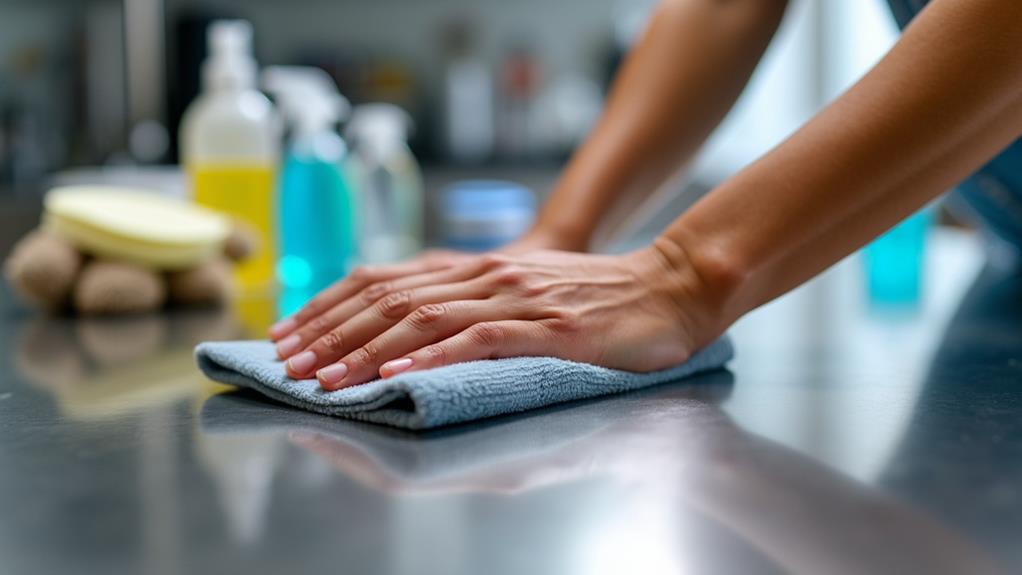
Consistency is key to keeping your stainless steel furniture looking its best. Regular care guarantees that your pieces remain polished and free of blemishes. Establishing a routine maintenance schedule will make a big difference. Start by wiping down surfaces weekly with a soft, damp cloth to remove dust and fingerprints. For tougher spots, use a gentle cleaner specifically designed for stainless steel.
Applying protective coatings can also extend the life of your furniture. These coatings form a barrier against moisture and contaminants, reducing the likelihood of rust and stains. Reapply these coatings periodically, depending on the manufacturer's instructions.
Here are some simple steps to incorporate into your routine:
- Weekly Wipe-Down: Use a soft, damp cloth to eliminate dust and smudges.
- Monthly Cleaner: Employ a stainless steel cleaner for deeper cleaning and shine.
- Protective Coatings: Apply every few months to shield against moisture and contaminants.
- Quick Fixes: Address spills and smudges immediately to prevent staining.

